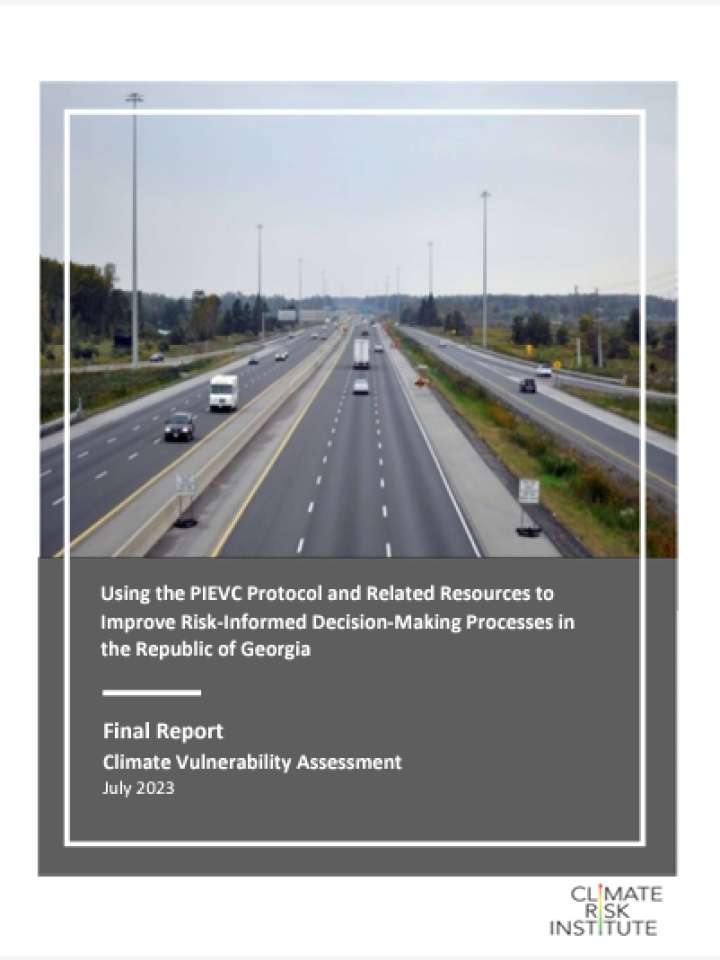Application of the PEIVC protocol in Georgia: Risk-informed decision-making processes
The main focus of the project was a desktop-based vulnerability assessment of road segments in a region of the Republic of Georgia particularly prone to the impacts of severe weather, especially in the form of landslide related events.
Some specific findings related to higher vulnerability interactions include:
- Asphalt surfaces are exposed to the maximum number of evaluated climate hazards in this assessment, with 6 hazards (temperature change, extreme heat, heat waves, extreme cold, short duration high intensity rainfall, and multi-day rainfall) rated medium vulnerability and 1 hazard (wildfire) rated high vulnerability.
- Several other road infrastructure components also exhibit potentially high vulnerability, including embankments and stormwater drainage, base on exposures to short-duration high intensity rainfall events and multi-day rainfall events.
- Wildfire-related interactions were rated as high vulnerability for a number of components within the analysis, including asphalt surfaces, embankments, bridge carriageway and bearings, tunnel ventilation, stormwater drainage, and communications.
Explore further
